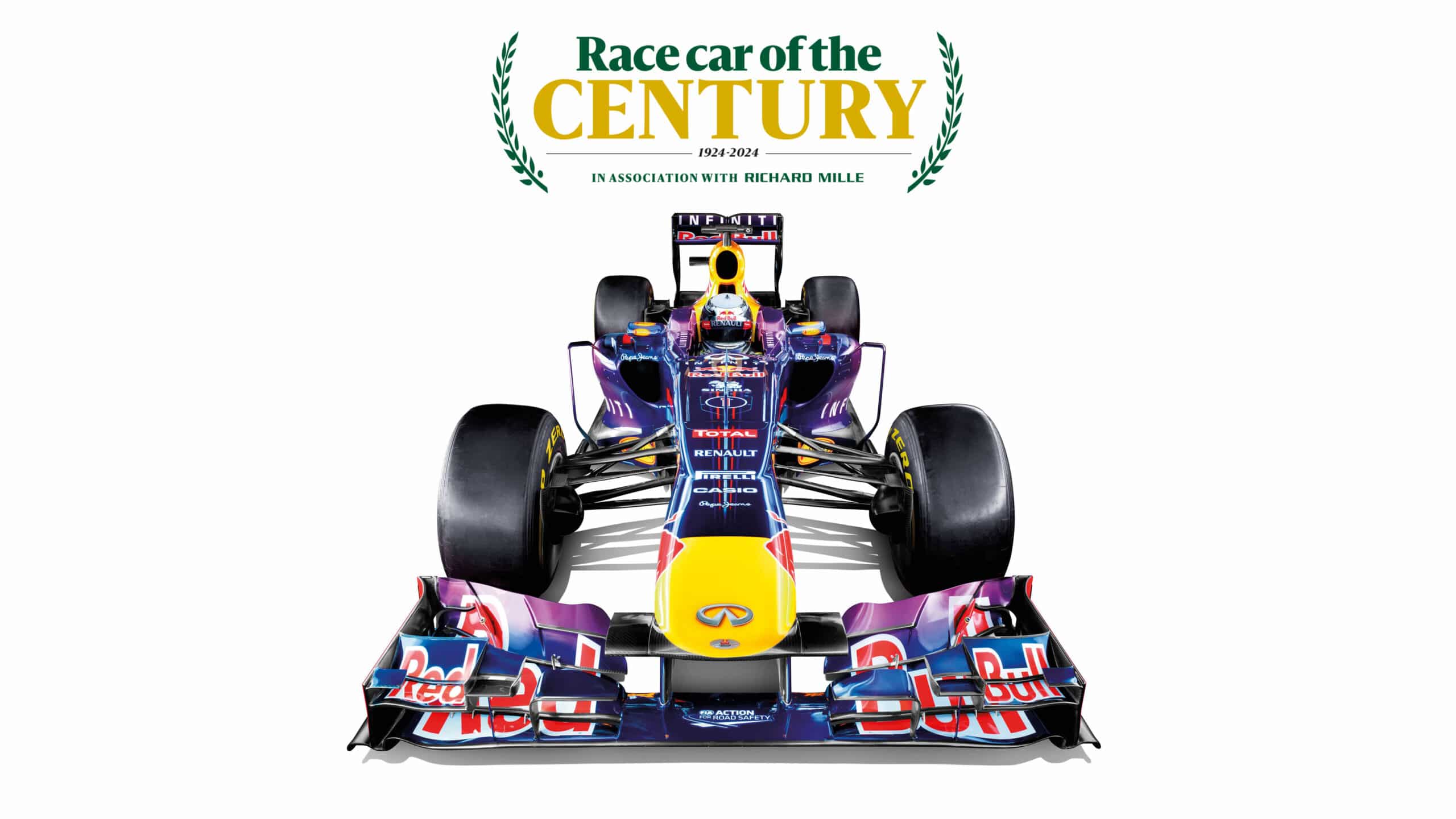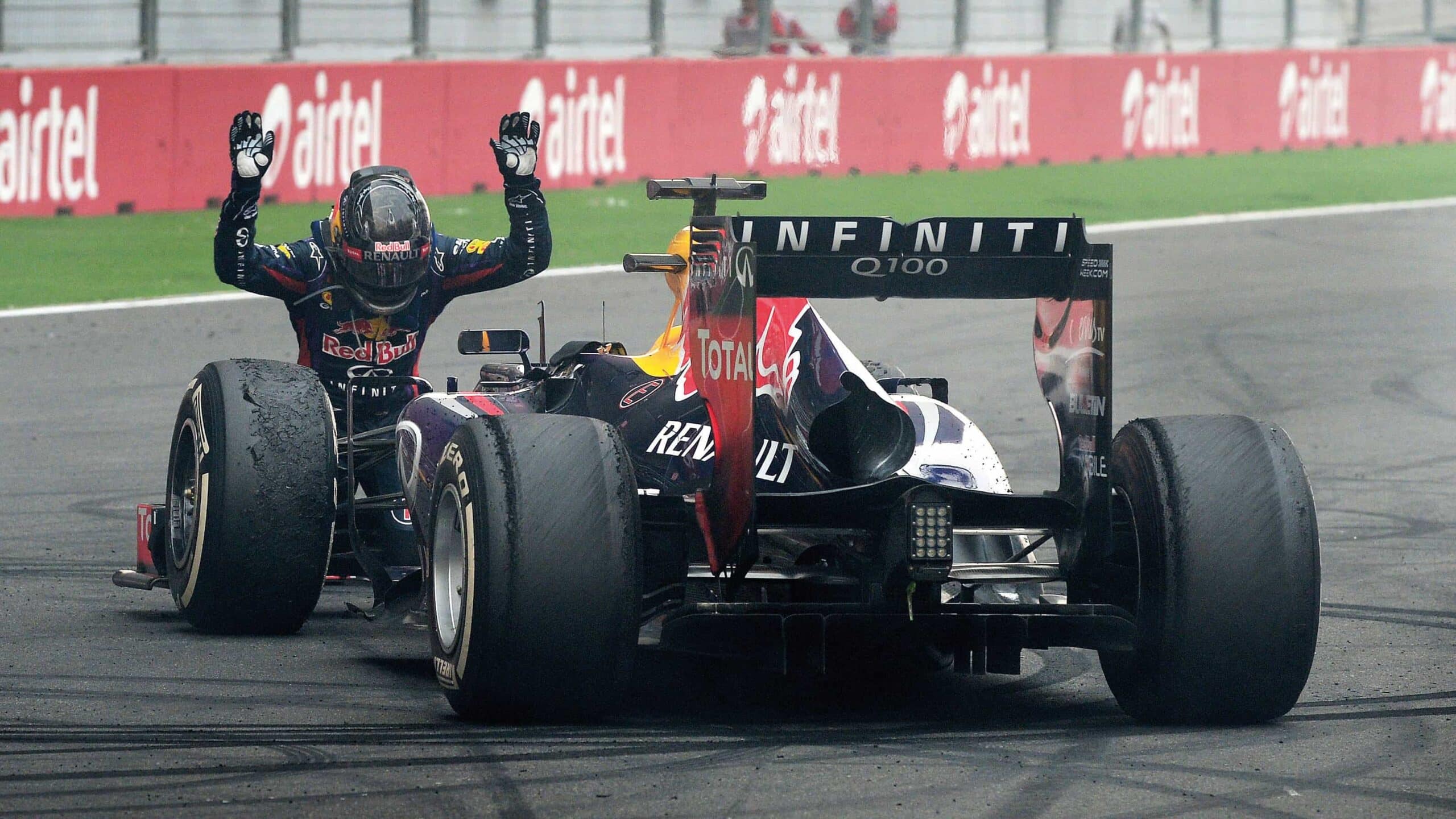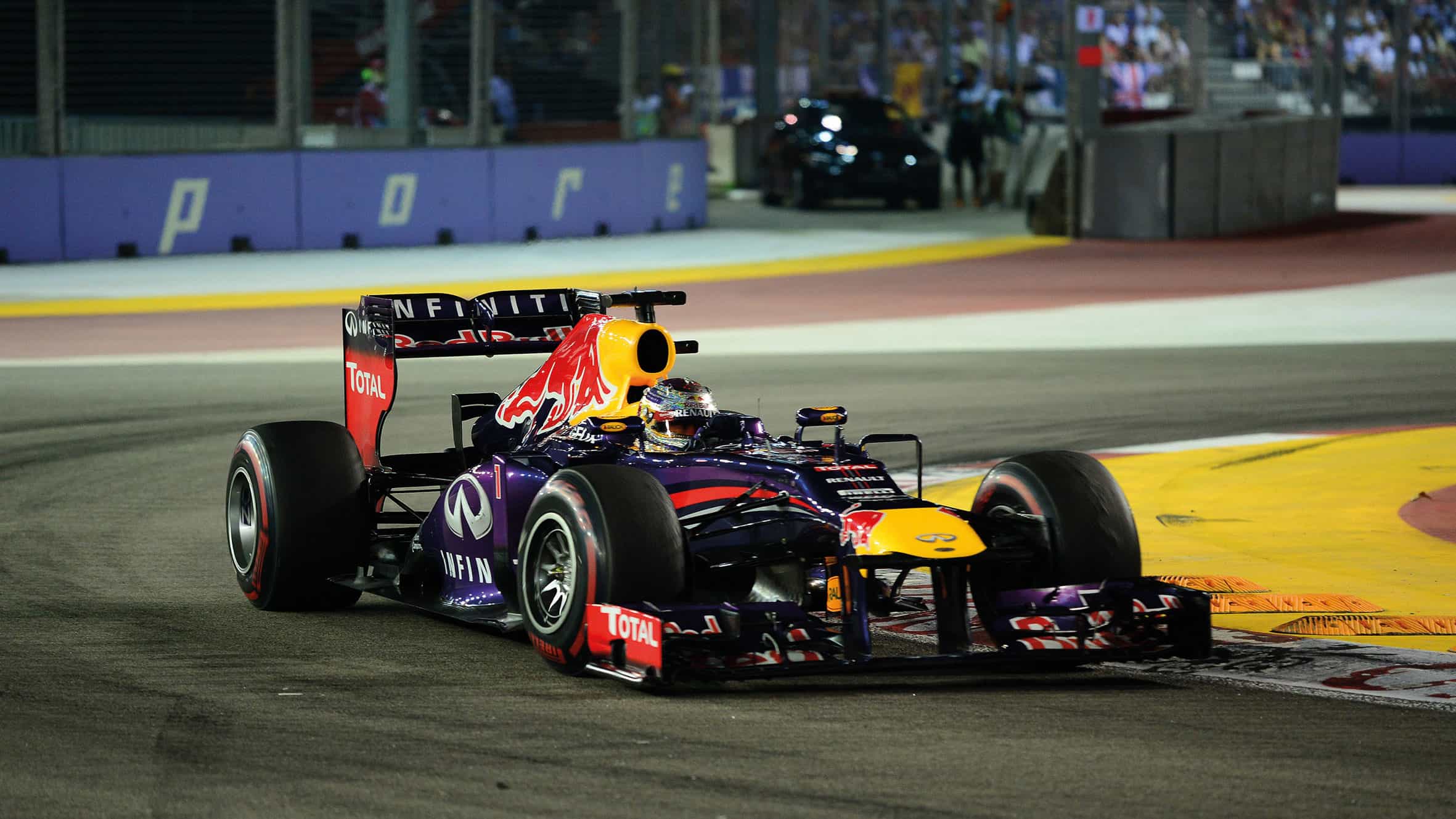Red Bull RB9: F1 machine that sealed the team’s first dominant era
With Sebastian Vettel in full flight, this car outclassed all-comers. Damien Smith tells us why Adrian Newey’s RB9 was a special prize

Red Bull content pool
Voting has now closed in our Race Car of the Century poll and the winner will be announced later this summer. Sign up to our Archive newsletter and you’ll be among the first to be notified.
10 2010s Red Bull RB9
“We have to remember these days,” said Sebastian Vettel, his voice on the team radio in Austin cracking with emotion after securing his eighth grand prix victory in a row. “Because there is no guarantee they will last forever. Enjoy them as long as they last.”
Poignant at the time, the German’s characteristically reflective message resonated into the hybrid wilderness years that followed, with a prescience he could never have imagined. He never again had it so good. Such times would come again for Red Bull, of course: we’re living in them right now, even more emphatically with Max Verstappen. But back then this was new, as an entity risen fresh from the ashes of sorry Jaguar properly hit its stride. This wasn’t a two-year Benetton or Renault-style flash in the pan like 1994-95 or 2005-06, and it was so much more substantial than a one-off stars-aligning anomaly like for Brawn GP in 2009. This qualified as a quantifiable era – the Vettel era. And the Red Bull RB9 of 2013 was its bookend.

Sebastian Vettel gives praise to his RB9 having won the 2013 Indian Grand Prix from pole for a fourth successive F1 world title
We’ve picked this car, but its predecessors going back to the RB5 of 2009 are all wrapped into this contender for Motor Sport’s Race Car of the Century. As is the way, individual models merge into an evolved family in modern Formula 1. But in among four consecutive years of drivers’ and constructors’ title success, there was still room for singularity: RB5 was the breakthrough winner; RB6 the first champion; RB7 utterly dominant; RB8 much less so. And RB9, in Vettel’s fully mature hands, a record-breaker to sign off F1’s last year of V8 power with a flourish.
The stats alone are astonishing: 13 wins from 19 races, all for Vettel, nine of which came consecutively to match Alberto Ascari’s record that had stood apart since 1952/53; 24 podiums, with added contributions from Mark Webber in his final F1 season; and 11 pole positions, nine for the German, two for the Aussie. At season’s end Red Bull’s tally stood at 560 points, with Vettel’s score of 397 more than second-placed Mercedes could manage combined between its new star Lewis Hamilton and Nico Rosberg. For those who might only know Verstappen’s run today, it will sound all too familiar.
Take another step back and the RB9 capped the 2.4-litre V8 generation to leave Red Bull way ahead of its main rivals Mercedes and Ferrari. Since the V8s replaced the V10s in 2006, the new kids on the block had won 47 of 147 grands prix, with Ferrari next up on 38. Still only 26 and now a four-time world champion, Vettel had scored 39 of Red Bull’s victory total, far clear of Fernando Alonso (24) and Hamilton (22). And lest we forget, this was a collaboration. Red Bull’s Renault V8s logged 60 wins to Mercedes’ 46.

Seb’s Singapore GP: pole, led every lap, fastest lap and a win by 32.6sec
Grand Prix Photos
The RB9 sealed the deal – although what should enhance its reputation is that its success didn’t come easily. First time out in Australia, Lotus stole the show, then over the course of spring into summer Ferrari grabbed a brace and Mercedes a trio. Except after the Hungarian GP no one other than Vettel stood on the top step. But were dark arts at play? In Singapore, talk of illegal traction control undermined the glory – but the coughing Renault V8 was explained as aggressive engine mapping, cleverly replicating the blown diffuser effect now banned, and that Adrian Newey had harnessed so consummately for Vettel to put to such devastating use. There are always other ways to skin a bull.
The team hit other potholes. In Malaysia, just two races in, Vettel’s ruthless ambition overrode ‘Multi 21’ team orders to maintain position, leaving Webber furious. It threatened to swallow the campaign before it had properly begun. Later in July exploding Pirelli tyres at Silverstone undermined F1 itself. But then Vettel found his groove – and pounded the life out of the season. Again, a familiar tale.
Let’s spare a nod to aerodynamicist Peter Prodromou and chief designer Rob Marshall. But Red Bull was always Adrian Newey’s project, to pick up the unfinished ‘indie’ business he began at Leyton House March in the 1980s. And it’s still not done. But Vettel’s warning still rings true, particularly amid current affairs: enjoy it while it lasts.
MS verdict: Culmination of a rolling ball of momentum, from the pen of motor racing’s greatest designer. RB9 helped set the template by which Newey still grafts.
